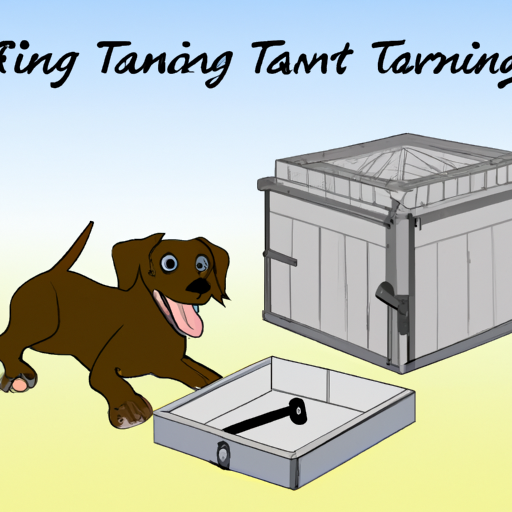Introduction
Have you ever wondered why some dog owners love crate training their dogs? As a caregiver, you may have heard about crate training but might be unsure of what it entails. This guide is designed to provide you with all the information you need to know about crate training.
What is Crate Training?
Crate training is a method used by dog owners to create a personal space for their dogs, a space that mimics the den-like environment that dogs are instinctively drawn towards. It involves training a dog to accept a crate or cage as a familiar and safe location. By carefully introducing a dog to a crate, and gradually increasing the time the dog spends in it, crate training can become a positive experience for both you and your dog.
The Benefits of Crate Training
Crate training offers several benefits for both dogs and caregivers:
- Housebreaking: Dogs instinctively avoid soiling their personal space. Thus, crate training can be an effective tool for housebreaking a puppy or a newly adopted adult dog.
- Safety: A crate can keep a dog safe when you can’t supervise him directly. It can prevent him from chewing electrical cords or swallowing small objects when you’re not around.
- Travel: A crate-trained dog is easier to travel with. He will feel safe and comfortable in his crate during car rides or trips to the vet.
How to Crate Train Your Dog
Crate training should be a positive experience for your dog. Here are some steps you can follow:
- Choose the Right Crate: Make sure the crate is large enough for your dog to stand, turn around, and lie down comfortably. However, it should not be so large that your dog can soil one end and sleep at the other.
| Dog Size | Crate Size |
|---|---|
| Small dogs under 30 lbs | 24 inches |
| Medium dogs under 40 lbs | 30 inches |
| Large dogs under 70 lbs | 36 inches |
| Extra large dogs under 90 lbs | 42 inches |
-
Introduce Your Dog to the Crate: Start by placing the crate in a common area with the door open. Allow your dog to explore the crate on his own, and reward him with treats when he goes inside.
-
Feed Your Dog in the Crate: Begin feeding your dog his meals inside the crate. This will create a positive association with the crate.
-
Gradually Increase Crate Time: Once your dog is comfortable eating in the crate, you can start closing the door and gradually increasing the time he spends in the crate.
Common Crate Training Mistakes to Avoid
- Using the Crate as Punishment: The crate should be a safe and happy place. Never use it as a place for time-outs or punishment.
- Crating for Too Long: Dogs are social animals and need interaction. They should not be crated for long periods of time.
- Crating a Dog with Separation Anxiety: Dogs with separation anxiety can become more stressed in a crate. In such cases, it’s best to seek professional help.
Frequently Asked Questions
1. Is crate training cruel?
No, when done properly, crate training is not cruel. It provides a safe, den-like space for your dog.
2. How long should a dog stay in a crate?
The length of time a dog can stay in a crate depends on his age and temperament. Generally, a puppy can stay in a crate for an hour for every month of age.
3. Can older dogs be crate trained?
Yes, older dogs can be crate trained, but it might take a bit more time and patience.
Crate training is a versatile and useful tool for dog owners. When done correctly and responsibly, it can provide a safe and comforting space for your dog, while also giving you peace of mind. As a caregiver, it’s essential to understand and implement crate training in a way that benefits both you and your canine companion.



